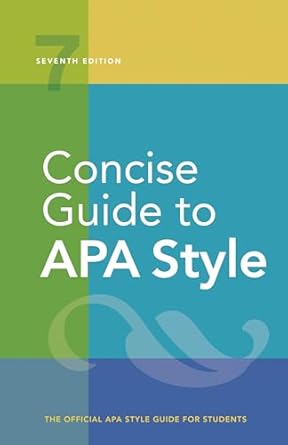[toc]
intext citation guide mastering academic referencing
Concise Guide to APA Style: 7th Edition (OFFICIAL)
Page 209 Review
The Nuances of In-Text Citations: A Deep Dive
This excerpt delves into the intricacies of in-text citations, providing specific guidelines for various source types.
Understanding these rules is crucial for academic integrity and clear communication of research.
Let’s break down some key points.
Citing Sources with Page Numbers
The fundamental principle of in-text citations is acknowledging the origin of information.
When citing sources with page numbers, the format is straightforward: “(Centers for Disease Control and Prevention, 2019, p. 10)”.
This clearly indicates the author (or organization), year of publication, and the specific page where the information can be found.
Similarly, “(Armstrong, 2015, pp. 3-17)” illustrates how to cite a range of pages.
This level of detail ensures readers can easily verify the source material.
Navigating Sources Without Page Numbers
However, not all sources have page numbers.
This excerpt provides guidance for citing sources like online articles, videos, and religious texts.
For instance, “(Shadid, 2020, paras. 2-3)” demonstrates how to cite specific paragraphs in a web article.
Likewise, “(Kovaéié & Horvat, 2019, Table 1)” shows how to reference a specific table within a source.
Special Cases: Chapters, Videos, and Slides
The excerpt also addresses less common citation scenarios. “(Shimamura, 2017, Chapter 3)” shows how to cite a specific chapter within a book. “(Beck Institute for Cognitive Behavior Therapy, 2012, 1:30:40)” details citing a specific timestamp in a video or audiobook.
And “(Thompson, 2020, Slide 7)” covers citing specific slides in a PowerPoint presentation.
These examples highlight the comprehensive nature of the guidelines.
Citing Religious and Classical Works
Citing religious and classical works presents unique challenges.
The excerpt recommends citing parts (e.g., books, chapters, verses, lines) rather than page numbers, as these are consistent across editions.
For example, “(King James Bible, 1769/2017, 1 Cor. 13:1)” cites a specific verse in the Bible. “(Aristotle, ca. 350 B.
C.
E./1994, Part IV)” cites a specific part of Aristotle’s work.
And “(Shakespeare, 1623/1995, 1.3.36-37)” gives an example of how to cite lines in Shakespeare.
The note that a full entry for the entire work should be included in the reference list is very important.
The text explicitly states that “In the reference list, provide an entry for the entire work (not only the part that you used).” This is crucial for proper attribution and helps readers locate the full source.
Paraphrasing and Quoting
The text specifies that it is possible to cite a specific part of a source whether you are paraphrasing or directly quoting. “It is possible to cite a specific part of a source whether you are para- phrasing (see Sections 8.23-8.24) or directly quoting (see Sections 8.25- 8.27).” This clarifies that the principles of in-text citation apply regardless of whether you are restating someone else’s idea in your own words or using their exact words.
Dealing with Unknown Authors
Finally, the excerpt addresses how to cite works with unknown or anonymous authors. “When the author of a work is not named, the author may be unknown (i.e., no author is listed on the work, as with a religious work) or identified specifically as ‘Anonymous.’” In such cases, the title of the work takes the author’s place in the citation.
This means, “include the title and publication year in the in-text citation (note that the title moves to the author position in the reference list entry as well).”
Key Takeaways
This excerpt provides a solid foundation for understanding in-text citation practices.
Key takeaways include:
* Always cite your sources to avoid plagiarism.
* Use page numbers when available, otherwise, cite specific parts (paragraphs, tables, chapters, etc.).
* Follow specific guidelines for religious and classical works.
* If the author is unknown, use the title in the citation.
By adhering to these guidelines, researchers can ensure the accuracy and integrity of their work.
Buy full ebook for only $18: https://www.lulu.com/shop/american-psychological-association/concise-guide-to-apa-style-7th-edition-official/ebook/product-rmzpq54.html?page=1&pageSize=4


Leave a Reply